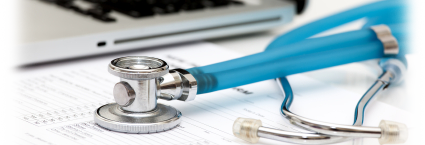I’d like to thank my readers who emailed me for information about informatics. I thought I would write a post for everyone to read instead of emailing everyone with the same information. The term informatics is confusing to some people as many healthcare disciplines have their own specific definition of informatics. There are healthcare informatics, medical informatics, nursing informatics, consumer informatics, bioinformatics, dental informatics, bioinformatics, clincial health informatics, and public health informatics. It’s easy to become confused and will decipher the differences between all of these disciplines. What is Informatics? Informatics is the science and art of turning data into information. The term informatics orginated in France and is from the French term informatique, which means computer milieu (Saba 2001). The broad definition of informatics is “the study of the application of computer and statistical techniques to the management of information”. The term informatics has been applied to various disciplines such as medicine, nursing, dental, and public health just to name a few. Healthcare informatics is a broad term for all fields using technology. Health informatics is the general terminology to describe educational technology for healthcare clients or the general public. Medical informatics is used as a broad term to refer to all disciplines in the field of medicine with
specific health-related areas beneath it including nursing informatics and consumer informatics. Discipline specific definitions of informatics Medical informatics: refers to the application of information science and technology to acquire, process, organize, interpret, store, use, and communicate medical data in medical education, practice, research, patient care, and health management Nursing informatics: specialty that integrates nursing science, computer science and information science to manage and communicate data , information, knowledge, and wisdom in nursing practice. Nursing informatics faciliates the integration of data, information, knowledge, and wisdom to support patients, nurses, and other providers in their decision making in all roles and settings. This support is acccomplished through the use of information structures, information procesess, and information technology (ANA, 2007). Health informatics: application of computer and information science in all basic and applied biomedical services to facilitate the acquistion, processing, interpretation, optimal use, and communication of health related data. The patient is at the center and the process of care. The goal is to enhance the quality and efficiency of care provided. Bioinformatics: application of computer and information technology to the management of biological information including the development of databases and algorithms to faciliate research. Consumer health informatics: branch of medical informatics that studies the use of electronic information and communication to improve medical outcomes and the healthcare decision-making process form the patient/consumer perspective (AMIA, 2007) Dental informatics: computer and information sciences to improve dental practice, research, education, and management Clinical health informatics: multidisciplinary field that focuses on the enhancement of healthcare through clinical information management; improvement of information processes, implementation of clincial information systems; the use of clinical decision support tools to improve the effectiveness, quality, and the value of services rendered Public health informatics: application and information and computer science and technology to public health practice, research, and learning I hope these definitions of informatics help you decipher through the healthcare terminology jungle. There are other informatics disciplines that I did not mention such as radiology informatics but fall under the umbrella of medical informatics.



